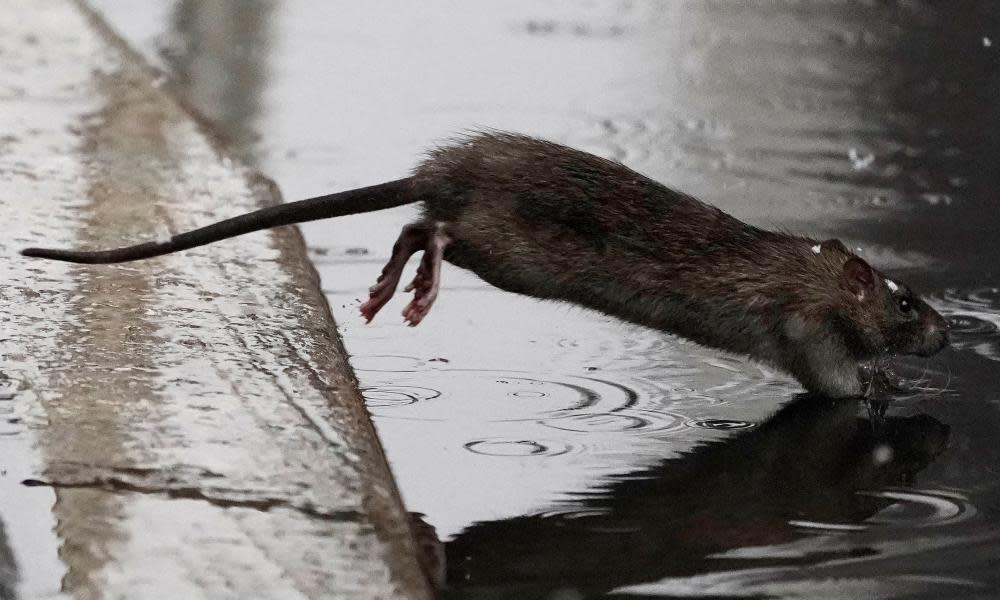Beer and bagels please: New York rats evolve to mirror human habits

Humans are not alone in suffering from the stresses of modern city life. Researchers have found the brown rats of New York are struggling just as hard to adapt to urban existence.
Indeed it is possible, they say, that both humans and rats have undergone parallel shifts in their genetic make-up in response to city life, leaving them prone to similar health threats, such as the effects of pollutants and the consumption of highly sugared foods.
“We know rats have changed in incredible ways in their behaviour and in their diet, just as human communities have changed,” said Arbel Harpak, a population geneticist at the New York’s Columbia University. “In New York you can see them eat bagels and beer; in Paris they like croissants and butter. They adapt in amazing ways.”
But how profound are these changes? Are rats merely first-class opportunists and scavengers, or have they been changing at a genetic level as they adapt to modern life? To answer these questions, a team – co-led by Harpak – analysed the genomes of 29 New York rats which had been lured into traps filled with bacon, peanut butter and oats – favourite rodent treats in the Big Apple.
Urban rats have to move through highly artificial environments that are very different from natural habitats
Arbel Harpak
Then the researchers compared the genomes of the city’s rodents with those of nine brown rats from Heilongjiang province in north-east China, the original home of Rattus norvegicus. Their findings – posted last week on online site bioRxiv – included a list of several dozen rat genes that showed major changes in DNA over the centuries as the species spread from Asia to Europe and on to America, and from the countryside into cities. These altered genes include those associated with diet, behaviour and movement, and reflect the ever-present need for rats to adapt to the challenges of living with humans in a city. The pressures include increased danger from disease and changes in diets, said the scientists, among them Pleuni Pennings of San Francisco State University and Jason Munshi-South of Fordham University.
One gene highlighted by the team has been linked with changes in location behaviour. “This could reflect the fact that urban rats have to move through highly artificial environments that are very different from natural habitats,” said Harpak. “So you could argue these gene changes might have evolved to help them move more easily through sewers and pipes.”
In addition, the team also pinpointed changes to the gene CACNA1C, which has been repeatedly associated with psychiatric disorders in humans. They suggest that changes in rat behaviour, at a DNA level, may be occurring in response to changes in local predators, or to novel stimuli.
Related: Should we be following New York's cunning rodent control plan – and getting rats drunk?
The crucial point, say the researchers, is that urban rats are so closely associated with human city-dwellers that it is possible similar genetic changes have occurred in both species. “Like humans, rats live in higher densities in cities, leading to increased pathogen transmission potential,” they argue. “In addition, mosquito species that have rapidly invaded urban areas across the world feed on both rats and humans – suggesting a novel, shared-disease exposure.”
The most striking common feature of the lives of urban humans and urban rats is diet, the researchers discovered: both consume an increasingly large amount of highly processed sugars and fats. Such a diet leads to various health concerns, which could also apply to rats.
Exactly when brown rats went through most of these genetic changes is unclear. They could have been recent adaptations or could have occurred several hundred years ago.
“We don’t know but we have plans to find out,” said Harpak. His team is to test 125-year-old brown-rat pelts from a private collection in New York and analyse them to see if major changes had taken place by the end of 19th century or if they more recently. “That should give us a clearer indication of when these changes took place,” he said.


